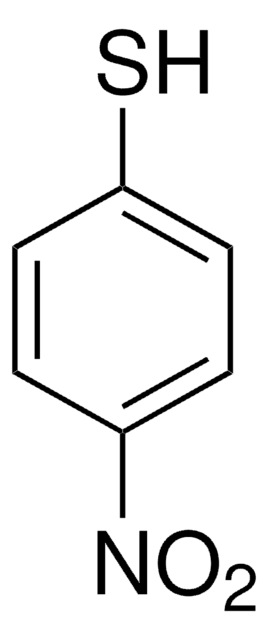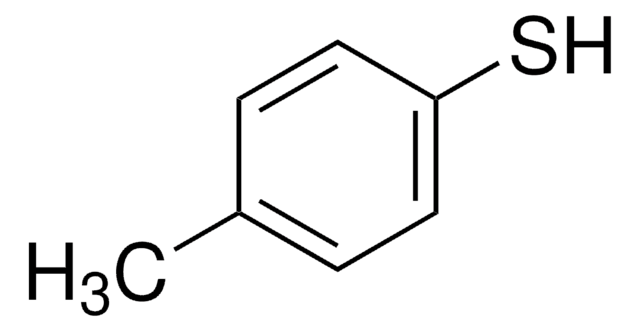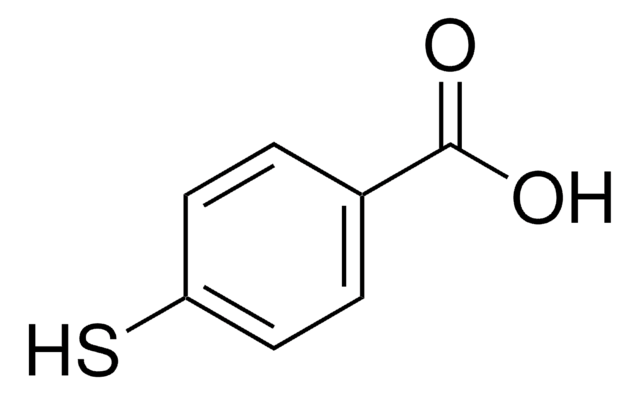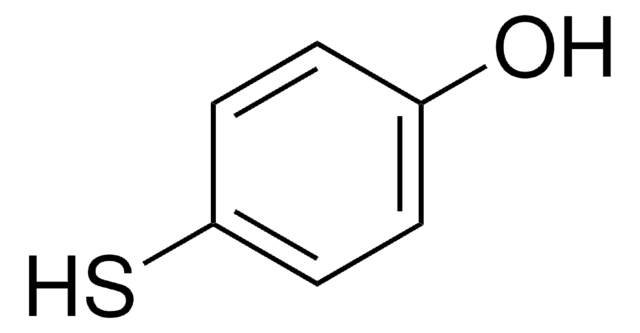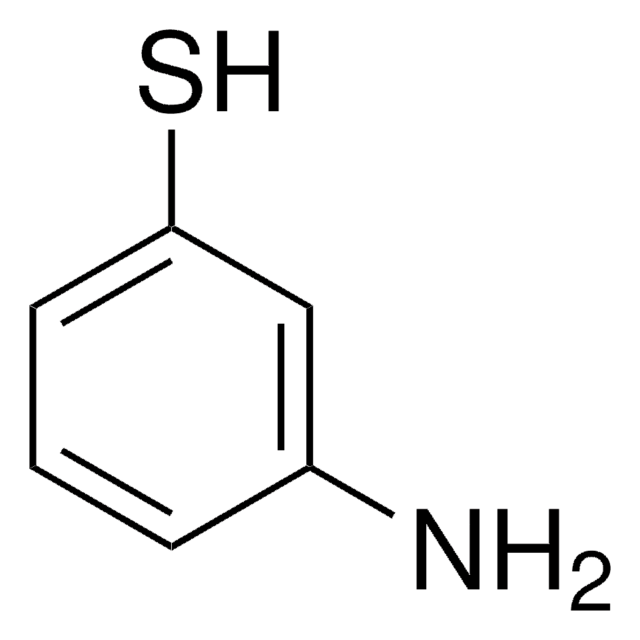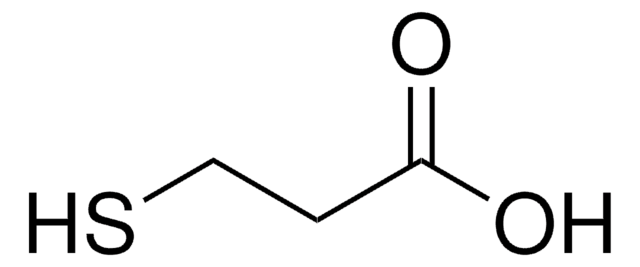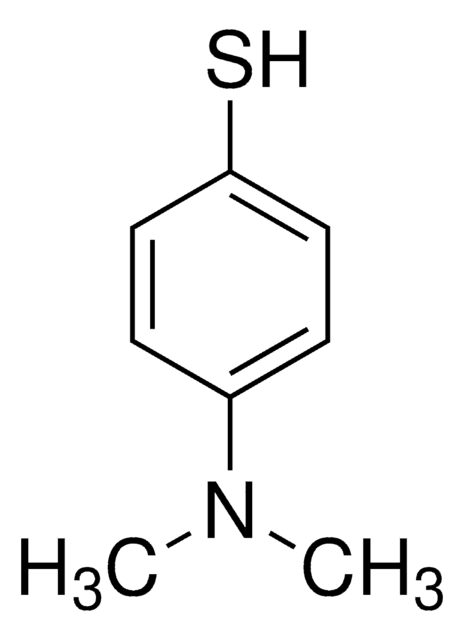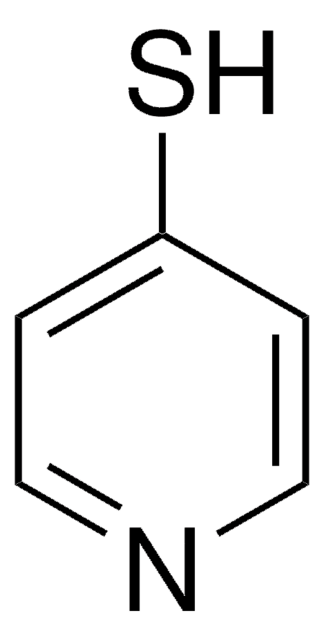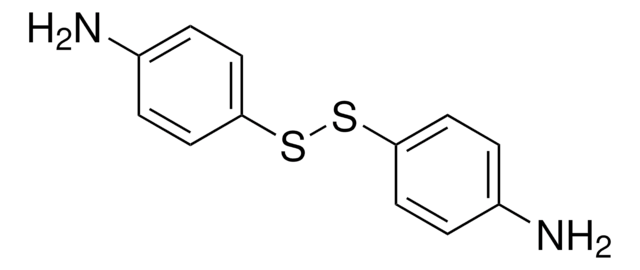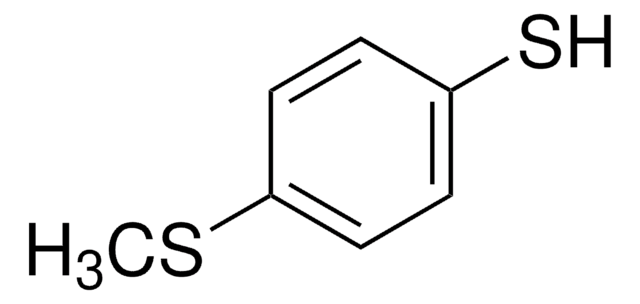422967
4-Aminothiophenol
≥97.0%
Synonym(s):
4-Aminobenzenethiol, 4-Aminophenyl mercaptan, 4-Mercaptoaniline
About This Item
Recommended Products
Quality Level
assay
≥97.0%
bp
140-145 °C/16 mmHg (lit.)
mp
37-42 °C (lit.)
storage temp.
2-8°C
SMILES string
Nc1ccc(S)cc1
InChI
1S/C6H7NS/c7-5-1-3-6(8)4-2-5/h1-4,8H,7H2
InChI key
WCDSVWRUXWCYFN-UHFFFAOYSA-N
Looking for similar products? Visit Product Comparison Guide
Related Categories
General description
4-Aminothiophenol (p-aminothiophenol, PATP) is an aromatic thiol. The self-assembly of silver and gold nano particles which are interconnected with 4-ATP to form metal-molecule-metal sandwich architecture has been characterized by surface enhanced Raman scattering (SERS) using an off-surface plasmon resonance condition. Chemical transformation of PATP to 4,4-dimercaptoazobenzene (DMAB) has been extensively studied.
Application
It may be used in the following studies:
- As a water insoluble ligand in the synthesis of pectin–4-aminothiophenol conjugates.
- To functionalize gold nanorods (GNR) in the development of GNR nitrite sensor.
- To form self-assembled monolayers (SAMs) of 4-aminothiophenol in the development of DNA biosensor.
- As a linker to thiol (SH) functionalize multiwalled carbon nanotubes (MWCNTs).
- To generate amino terminated self-assembly monolayers(SAMs) on platinum electrode which forms the base for attachment of single-wall carbon nano tubes (SWCTs).
signalword
Danger
hcodes
Hazard Classifications
Skin Corr. 1B
Storage Class
8A - Combustible, corrosive hazardous materials
wgk_germany
WGK 3
flash_point_f
235.4 °F - closed cup
flash_point_c
113 °C - closed cup
ppe
Eyeshields, Faceshields, Gloves, type P3 (EN 143) respirator cartridges
Certificates of Analysis (COA)
Search for Certificates of Analysis (COA) by entering the products Lot/Batch Number. Lot and Batch Numbers can be found on a product’s label following the words ‘Lot’ or ‘Batch’.
Already Own This Product?
Find documentation for the products that you have recently purchased in the Document Library.
Customers Also Viewed
Our team of scientists has experience in all areas of research including Life Science, Material Science, Chemical Synthesis, Chromatography, Analytical and many others.
Contact Technical Service